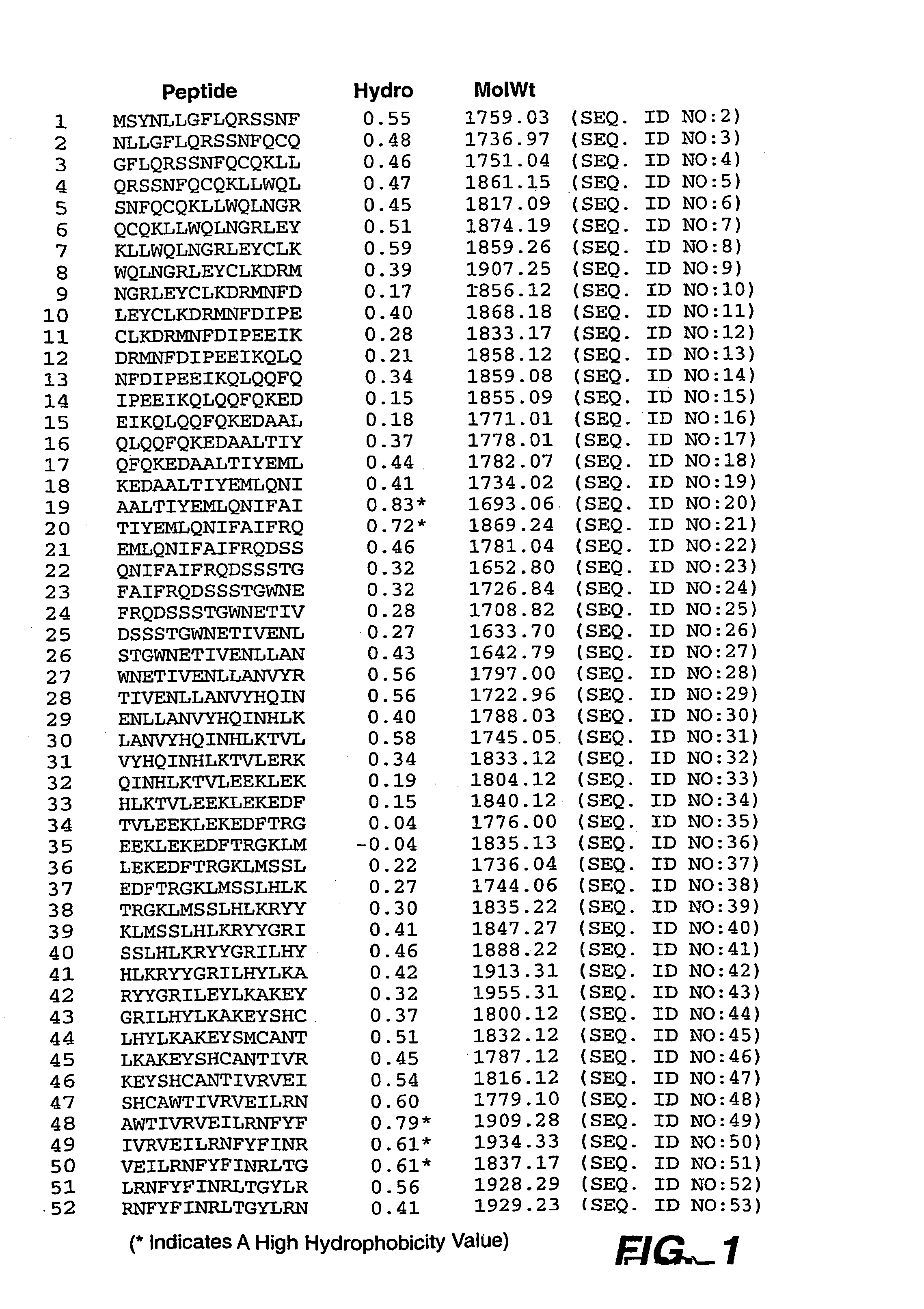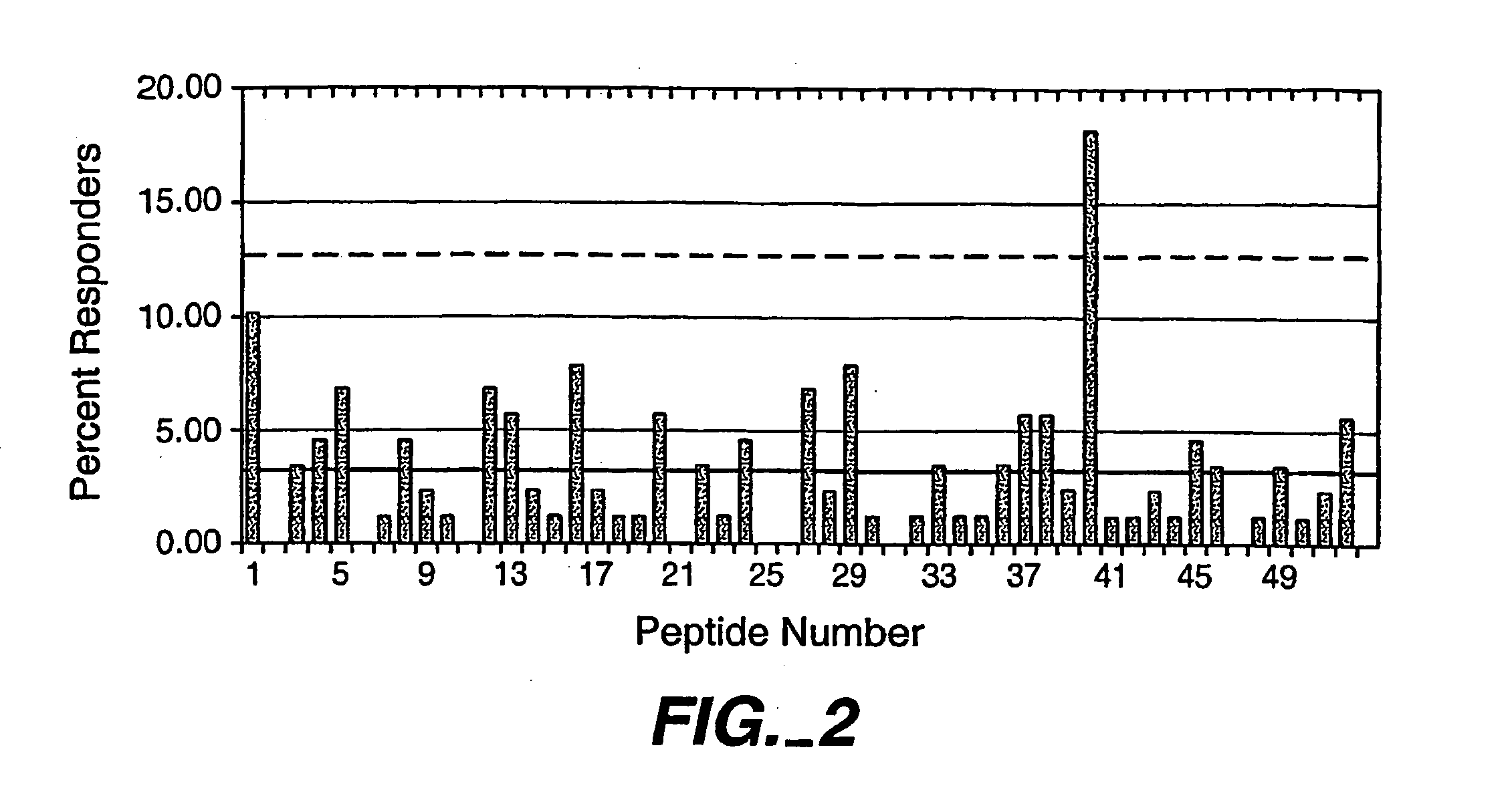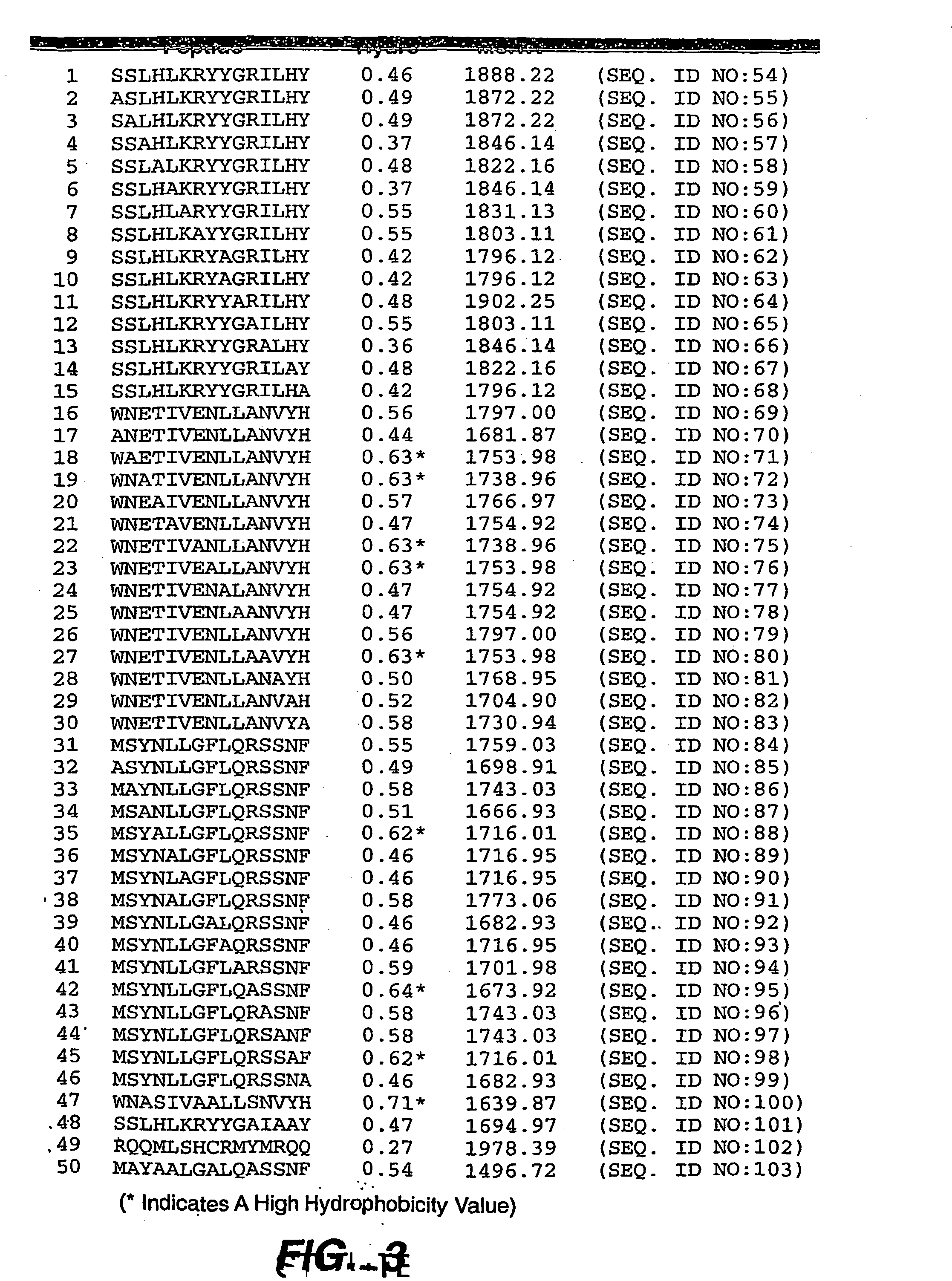Cytokines and cytokine receptors with reduced immunogenicity
a cytokine receptor and cytokine technology, applied in the field of cd4 + tcell epitopes, can solve the problems of aplastic anemia, autoimmune-related problems, and persistent thrombocytopenia, and achieve the effect of reducing immunogenicity and reducing the immunogenic respons
- Summary
- Abstract
- Description
- Claims
- Application Information
AI Technical Summary
Benefits of technology
Problems solved by technology
Method used
Image
Examples
example 1
Preparation of Cells Used in the I-MUNE® Assay System for the Identification of Peptide T-Cell Epitopes in IFN-β Using Human T-Cells
[0129] Fresh human peripheral blood cells were collected from 87 humans of unknown exposure status to IFN-β. These cells were tested to determine antigenic epitopes in IFN-β, as described in Example 3.
[0130] Peripheral mononuclear blood cells (stored at room temperature, no older than 24 hours) were prepared for use as follows: Approximately 30 mls of a solution of buffy coat preparation from one unit of whole blood was brought to 50 ml with Dulbecco's phosphate buffered solution (DPBS) and split into two tubes. The samples were underlaid with 12.5 ml of room temperature Lymphoprep density separation media (Nycomed; Pharma AS; Density 1.077 g / ml). The tubes were centrifuged for thirty minutes at 600×g. The interface of the two phases was collected, pooled and washed in DPBS. The cell density of the resultant solution was measured by hemocytometer, as ...
example 2
Identification of T-Cell Epitopes in IFN-β
[0137] Peptides for use in the I-MUNE® assay described in Example 3 were prepared based on the sequence of human fibroblast IFN-β sequence (Genbank P01574) with the sequence:
msynllgflqrssnfqcqkllwqlngrleyclkdrm(SEQ ID NO:1)nfdipeeikqlqqfqkedaaltiyemlqnifaifrqdssstgwnetivenllanvyhqinhlktvleeklekedftrgklmsslhlkryygrilhylkakeyshcawtivrveilrnfyfinrltgylrn
[0138] Based upon the full length amino acid sequence (SEQ ID NO:1) of this IFN-β, 15mers comprising the entire sequence of IFN-β were synthetically prepared. Consecutive peptides overlapped by 12 amino acids. A total of 52 peptides (SEQ ID NOS: 2-53) were created, the sequences of which are provided in FIG. 1.
[0139] Peptide antigen was prepared as a 2 mg / ml stock solution in DMSO. First, 0.5 microliters of the stock solution were placed in each well of the 96 well plate in which the differentiated dendritic cells were previously placed. Then, 100 microliters of the diluted CD4+ T-cell soluti...
example 3
I-MUNE® Assay for the Identification of Peptide T-Cell Epitopes in IFN-β
Using Human T-Cells
[0144] Once the assay reagents (i.e., cells, peptides, etc.) were prepared and distributed into the 96-well plates, the I-MUNE® assays were conducted. Controls included dendritic cells plus CD4+ T-cells alone (with DMSO carrier) and with tetanus toxoid (Wyeth-Ayerst), at approximately 5 Lf / mL.
[0145] Cultures were incubated at 37° C. in 5% CO2 for 5 days. Tritiated thymidine (NEN) was added at 0.5 microCi / well. The cultures were harvested and assessed for incorporation the next day, using the Wallac TriBeta scintillation detection system (Wallace Oy).
[0146] All tests were performed at least in duplicate. All tests reported displayed robust positive control responses to the antigen tetanus toxoid. Responses were averaged within each experiment, then normalized to the baseline response. A positive event (i.e., a proliferative response) was recorded if the response was at least 2.95 times the b...
PUM
| Property | Measurement | Unit |
|---|---|---|
| Composition | aaaaa | aaaaa |
| Solubility (mass) | aaaaa | aaaaa |
| Immunogenicity | aaaaa | aaaaa |
Abstract
Description
Claims
Application Information
 Login to View More
Login to View More - R&D
- Intellectual Property
- Life Sciences
- Materials
- Tech Scout
- Unparalleled Data Quality
- Higher Quality Content
- 60% Fewer Hallucinations
Browse by: Latest US Patents, China's latest patents, Technical Efficacy Thesaurus, Application Domain, Technology Topic, Popular Technical Reports.
© 2025 PatSnap. All rights reserved.Legal|Privacy policy|Modern Slavery Act Transparency Statement|Sitemap|About US| Contact US: help@patsnap.com



